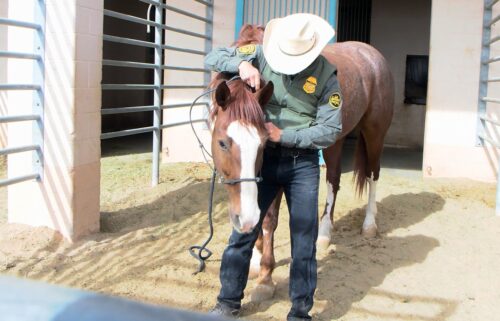Tree-carver chisels a new crane
Click here for updates on this story
DAVENPORT, Iowa (Quad-City Times) — Out in the farm fields northwest of Davenport, retired educator Thom Gleich, 71, stands on scaffolding he built around what used to be the trunk of a huge white oak tree, carving tools in hand.
With skill and artistic ability honed over more than 20 years of carving trees into sculptures, Gleich is fashioning what will be a 13-foot tall sandhill crane, its head stretching to the sky, its feet hidden in rushes and cattails.
Gleich calls this sculpture Majestic Hope III, a piece he hopes to donate to the city of Davenport’s parks and recreation department to be installed in the northeast corner of Vander Veer Botanical Park.
Yes, there already is a sculpture of a sandhill crane in that spot.
That is Majestic Hope II, a sculpture Gleich carved and that was dedicated in the fall of 2006 to take the place of the first Majestic Hope he carved during the summer of 1997, working in place and attracting the attention of thousands of passers-by on Brady Street.
The first project started in the fall of 1996 when Gleich noticed a 120-foot sycamore tree marked with a big red ‘X’ for removal because it was dying. An amateur wood carver, Gleich wondered if there was anything he could make of it.
He took his idea of a carving to the city’s forestry department whose director applied for, and received, a grant to buy Gleich a chainsaw, chaps and carving tools. The work started in early summer and when it was finished, the crane became an instant Quad-City landmark.
It also totally changed Gleich’s life. In addition to the spiritual journey of creating art from a once-living element, the work launched a far-reaching carving career.
After that Gleich received requests for carvings from all over the Quad-Cities and beyond, and he has since created hundreds of large pieces as well as thousands of smaller ones.
The bigger ones include the 10 statues fashioned after the post-Impressionist painting “A Sunday Afternoon on the Island of La Grande Jatte” that originally were installed on Davenport’s Credit Island, a tiger on the grounds of Davenport’s Sudlow Intermediate School and a saber-toothed tiger in a DeWitt Park.
The second carving
But the first statue, Majestic Hope I, didn’t last.
By 2004, it was literally rotting apart and Gleich carved a replacement dedicated two years later.
It has been a sturdy substitute, but the perfectionist in Gleich never really liked it.
“It wasn’t as elegant as the original,” he said. “It was more beefy, stockier.”
He asked the city arborist to let him know if crews were ever taking down a big white oak tree that he might use as a third Majestic Hope, and three years ago, he got a call.
The dying oak in Credit Island Park was perfect. “It was a monster,” Gleich said.
The tree was delivered to Gleich’s workshop — a former farm building that he rents from prominent Scott County farmer John Maxwell — and for about 2½ years, it just sat.
Even though Gleich had retired from teaching in 2009, he was busy with commissions and life in general and it wasn’t until this past winter and then the lockdown of the COVID-19 pandemic that he began to make significant progress.
He’s pleased with how this version is unfolding. “I think it’s going to show very well,” he said.
What he’s learned
When he’s finished carving, he will have the piece treated with insecticide so that any grubs still inside do not live to eat holes in the wood. That is a precautionary lesson he learned the hard way.
And instead of coating it with Spar brand marine varnish as he did in the beginning of his career, he will treat it with Cabot brand Australian timber oil that penetrates the wood instead of simply lying on top. Gleich found that if water somehow penetrates varnish, it will pop up the finish.
He also has learned to carve in such a way that he does not create pockets in the wood where moisture will collect. From the bird’s beak on down to its base, the wood has to provide one uninterrupted downhill run for water.
Another finishing touch includes digging in crevices with a wire coat hanger to bring out any wood debris, then sealing the cracks to make sure no moisture gets in. He does this by filling them with Gorilla glue, then taping them shut with duct tape until the glue is dry.
“I’ve learned a lot in 23 years,” he said.
Gleich hopes his current carving will last at least 10 to 15 years.
“By then I’ll be in my mid 80s,” he said. “I don’t know how well I’ll get up and down on scaffold. I expect this will be my last rendition.”
But he’ll keep carving as long as he is able.
“I don’t make a living doing this,” he said, “but I sure as heck enjoy it.”
Please note: This content carries a strict local market embargo. If you share the same market as the contributor of this article, you may not use it on any platform.




